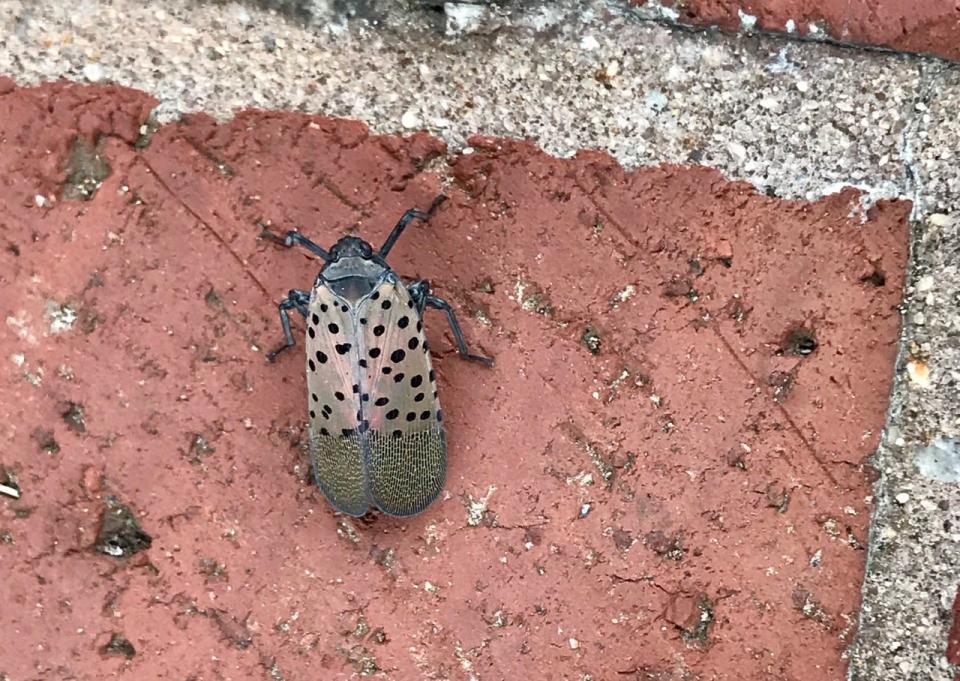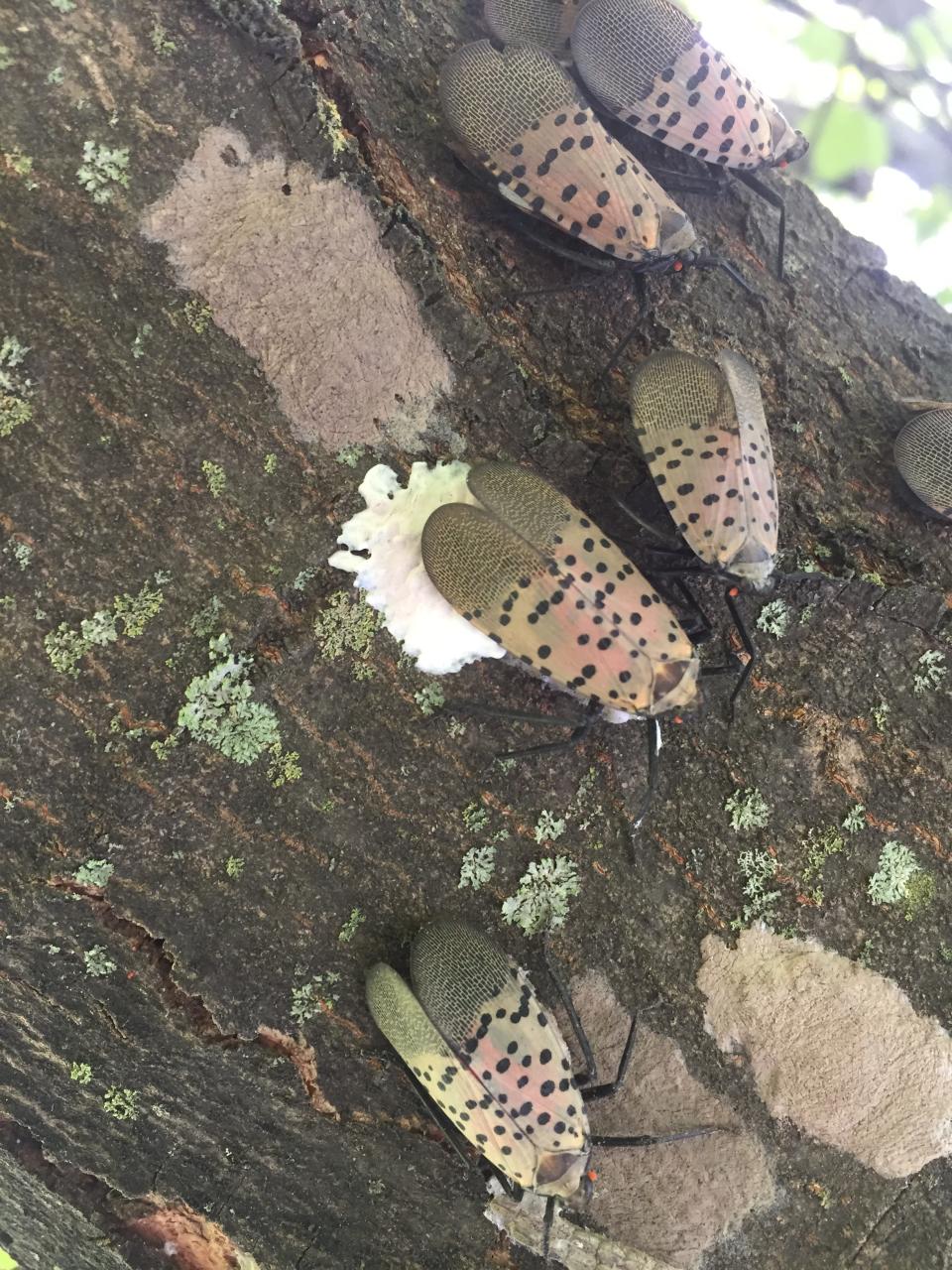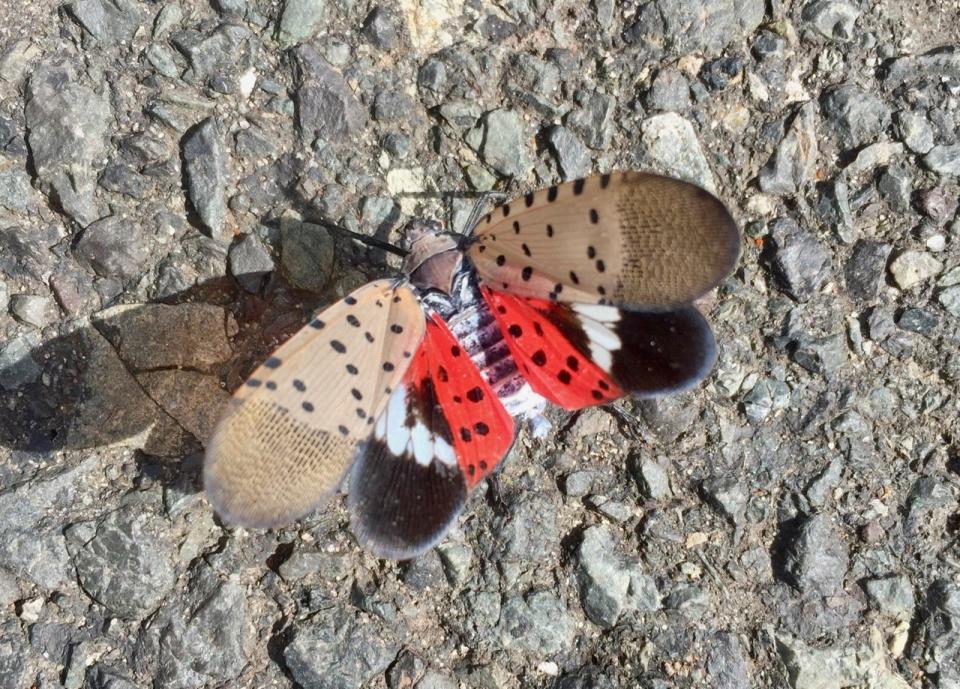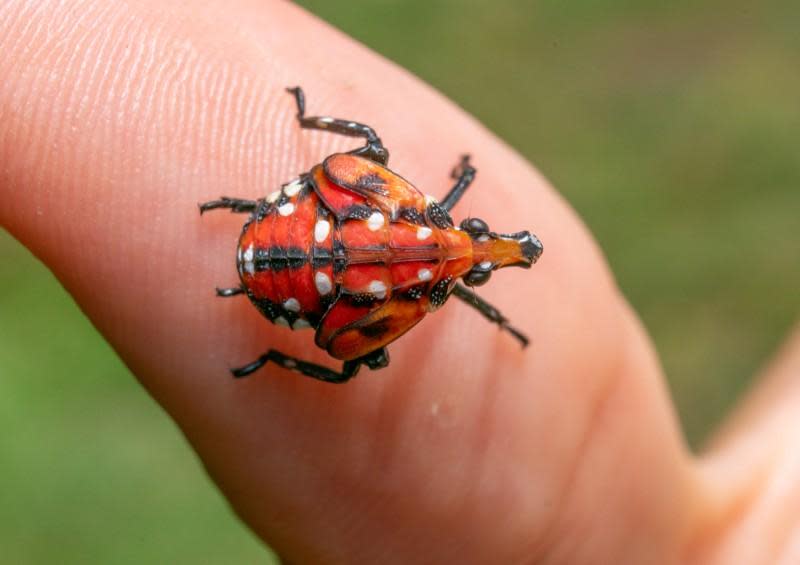Washington County among several counties added to Maryland's quarantine list for troublesome bug
Washington County has been added to Maryland's quarantine list for the troublesome spotted lanternfly.
The Maryland Department of Agriculture, on Thursday, released an updated map of its quarantine area that previously had consisted of Cecil and Harford counties since 2019. The quarantine now also includes Washington, Frederick, Carroll, Montgomery, Howard, Anne Arundel, Baltimore and Kent counties as well as Baltimore city.
“While they are not known to pose any serious human or animal health concern, the spotted lanternfly is a destructive invasive species that has negatively impacted agriculture operations throughout the mid-Atlantic region,” Agriculture Secretary Joe Bartenfelder said in a news release. “MDA has taken steps to expand the quarantine zone out of an abundance of caution as we remain vigilant in controlling the spread of this destructive insect.”
Agriculture officials have been meeting with residents in the Halfway area, said Kenton Sumpter, an entomologist on the state agriculture department's spotted lanternfly team. They might scrape off egg masses on the property. If dozens of egg masses are spotted, they work with residents to get agreements allowing agriculture officials to return and spray a dormant oil.
The sprayings, for residents and certain businesses, are done for free, Sumpter said. The department doesn't have the resources to provide free sprayings for everyone and is focusing on the Halfway area, the main expansion area of the spotted lanternfly outside of Hagerstown. The Interstate 81 corridor heading southwest to Williamsport is a focus to prevent further spread.
When it comes to businesses, agriculture officials will focus on distribution centers and transportation pathways.

They are particularly concerned with distribution centers that have direct connections to rail lines in the Hagerstown area, which could inadvertently help the pest spread, he said. Hopefully, businesses can practice good sanitation, but it can be hard to keep clean when in an infested area, Sumpter said.
Currently, agriculture officials are focused on egg masses because they won't hatch until late April, he said. The cold weather makes treatment difficult because the spray doesn't work below 40 degrees. Agriculture officials hope to return in the spring, when it's consistently warm, to spray before hatching occurs.
An egg mass can hold 30 to 50 eggs under its protective smear, agriculture officials and entomologists have said.

What does the quarantine mean?
Businesses, municipalities and government agencies that move regulated items within or from a quarantine zone must have a specialized permit, according to the agriculture department news release. Permits can be obtained by taking a free online training course through the Penn State Extension at https://extension.psu.edu/slf-permit-training-md.
The spotted lanternfly poses a major threat to regional agricultural industries. There are over 70 types of crops and plants it feeds on, including grapes, hops, apples, peaches, oak and pine.
Emelie Swackhamer, a horticulture educator on Penn State Extension's spotted lanternfly team, told The Herald-Mail in October that the biggest risk found so far was to vineyards.
Sumpter said a state agriculture official had met with at least one Washington County winery so far to provide education. The agriculture department doesn't have the capacity to spray vineyards, he said.
According to the updated quarantine order, regulated items include:
Any life stage of the spotted lanternfly.
All plants or plant parts, including live or dead trees, nursery stock, firewood, mulch and yard waste.
Outdoor industrial and construction material and equipment including stone, landscaping and remodeling waste.
Packing containers such as boxes and wood crates.
Outdoor household articles like grills, mowers and lawn tractors, deck boards, furniture covers, tarps, tile, mobile homes, and any equipment, trucks or vehicles not stored indoors.
Conveyances of any type, whether used to move materials previously listed or for personal use such as trailers, wagons and attached equipment.
Any other item or means of conveyance when an inspector determines it presents a risk of spread of any life stage of the spotted lanternfly.

Education and penalties
While there is a $500 fine per infraction for businesses found to have violated the order by moving an infested regulated article, the idea is not to issue those penalties "willy nilly," Sumpter said.
Sumpter said he would rather have someone call and report an infestation on a shipment, educating them and working on a compromise, than issue a fine. Permitting is an educational tool, he said.
Residents "do not need to live in fear" of being penalized, Sumpter said.
After The Herald-Mail published a story in October about the Hagerstown area being on the agriculture department's radar regarding the bug's growing presence, the department received several tips about spotted lanternflies from local residents, he said. The Valley Mall area was often mentioned as a place people spotted the bugs.
Sightings outside Cecil and Harford counties, from a single bug or egg mass to large numbers, can be reported through an online form at the ag department's spotted lanternfly webpage. The form has pictures of the life stages to help with identification. Sumpter encourages people to take photos to confirm it's a spotted lanternfly. Folks who see a single bug or small number of them, should kill them on the spot, he said.
People with questions about spotted lanternfly management can call 410-841-5920. Officials are usually able to return messages within a couple days, Sumpter said.

More: Hagerstown area of concern when it comes to spotted lanternfly. Here's what to know
More: Meet the spotted lanternfly, the bug health officials are begging you to kill on sight
More: Learn to spot and destroy invasive spotted lanternfly eggs
Problem areas
Hagerstown is a "big issue" when it comes to the spotted lanternfly because of its concentration of highways and rail lines, Sumpter said.
Agriculture officials would like to address the lanternfly situation there as well, but that will depend on available funding, he said.
Among the other areas added to Maryland's quarantine list, Sumpter said Sykesville and New Windsor in Carroll County tend to have the largest spotted lanternfly populations in Central Maryland.
On the Eastern Shore, there isn't as much tree of heaven present, Sumpter said. Tree of heaven is a main food source for the spotted lanternfly so agriculture officials are applying insecticide to tree of heaven found on properties they visit, he said.
There have been reports of the spotted lanternfly in Maryland as far south as Salisbury, Sumpter said.
While U.S. 50 is a concern, Sumpter said he's more worried about the spread of the bug along Interstates 81 and 95.
Franklin County, Pa., continues to be among the Pennsylvania counties under quarantine, according to the Pennsylvania Department of Agriculture's website.
Infestations of the spotted lanternfly also have been reported in Berkeley and Jefferson counties in West Virginia, but not in Morgan County, said Mary Beth Bennett, an agriculture and natural resource extension agent in Berkeley County.
This article originally appeared on The Herald-Mail: Washington County on Maryland's quarantine list for spotted lanternfly

